The history of the Olivetti company
Camillo Olivetti: the company's foundation
Ing. C. Olivetti & C., S.p.A. - the "first Italian typewriter factory" was founded by Camillo Olivetti on 29 October 1908 . It had 20 employees and a 500 sq.m production workshop with a weekly output of about 20 machines. The company's first typewriter , the M1, was presented at the Universal Fair in Turin in 1911.
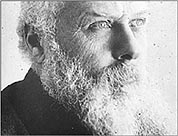 |
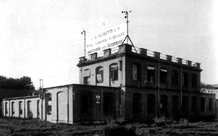 |
||
| Camillo Olivetti | The first factory |
Olivetti grew rapidly, building up a diversified product offer and opening subsidiaries in Europe and the rest of the world. In 1920 , the company presented the M20 typewriter; by the end of the 1920s, thanks to new forms of labour organisation and the introduction of mass production, it reached an annual output of 13,000 machines. While the number of sales branches multiplied in Italy, the company began its international growth, opening its first overseas subsidiary in 1929, in Spain, which was followed by operations in Belgium, Argentina and a number of other European and South American countries. Typewriter production expanded with the introduction of new models, including the first portable typewriter, the MP1, launched in 1932. During the 1930s and 1940s , Olivetti moved into teleprinters, calculators, office furniture and fittings. It also manufactured electric typewriters and calculators and began production of numerical controls. New manufacturing facilities were opened in Italy and, as from 1930, in other countries.
Adriano Olivetti: culture, growth, innovation
One of the key figures behind the company's rapid expansion was Adriano Olivetti, Camillo's son.
Appointed to the post of General Manager in 1932 and Chairman in 1938, Adriano established a corporate style and culture that won Olivetti a unique place in Italian and European industrial history.
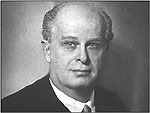 |
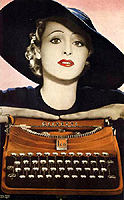 |
| Adriano Olivetti | Poster MP1, Xanti Schawinsky -1935 |
Adriano paid particular attention to technological development, innovation and product quality, and strengthened the company's international operations. His interest in industrial design laid the foundations for a tradition of excellence that continues today. The social issues of the workplace were another major concern, together with the relationship between the company and the local community. A multi-faceted personality - entrepreneur, intellectual, publisher and town planner with a keen interest in social problems - Adriano extended his activities well beyond the confines of the industrial world. He commissioned new factories, offices, employee housing, canteens and nurseries and developed a comprehensive system of social services.
Under Adriano Olivetti's leadership, the 1950s was a time of extraordinary growth, during which the company established itself as the undisputed leader in mechanical office product technology : its flagship products were the Lexikon 80 office typewriter introduced in 1948, the celebrated Lettera 22 portable typewriter launched in 1950 and the Divisumma calculator designed by Natale Capellaro in 1948 and renewed in 1956.
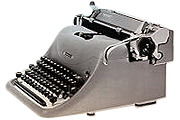 |
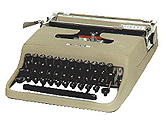 |
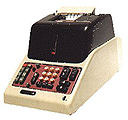 |
Olivetti Lexikon 80 M. Nizzoli - 1950 |
Olivetti Lettera 22 M. Nizzoli - 1950 |
Olivetti Divisumma 24 M.Nizzoli - 1956 |
In 1958, 50 years after its foundation, Olivetti had more than 24,000 employees, of whom approximately 10,000 in its 17 overseas subsidiaries; about 60% of production was exported. The expansion of the overseas sales and production operations was flanked in 1959 by the acquisition of Underwood, a major US typewriter manufacturer.
This period also saw the first major transformation in the company's history when, with great foresight, Olivetti invested in the new field of electronics . Realising that the new technology would revolutionise computing and office products, as early as 1952 Olivetti had opened a small R&D laboratory in New Canaan (Connecticut, USA); in 1955 it set up an electronics research lab near Pisa. Investments in electronics and the intensive work of the research team in Pisa drove the development of the Elea 9003, Italy's first electronic computer, which Olivetti presented in 1959. A device based entirely on transistors, the Elea 9003 placed Olivetti at the forefront of the world's computer manufacturers. Electronics seemed to be opening up a phase of exciting new growth.
Nice document, from Peter Haertel IFHB (Germany): Die mechanischen Rechenmaschinen der Firma Olivetti